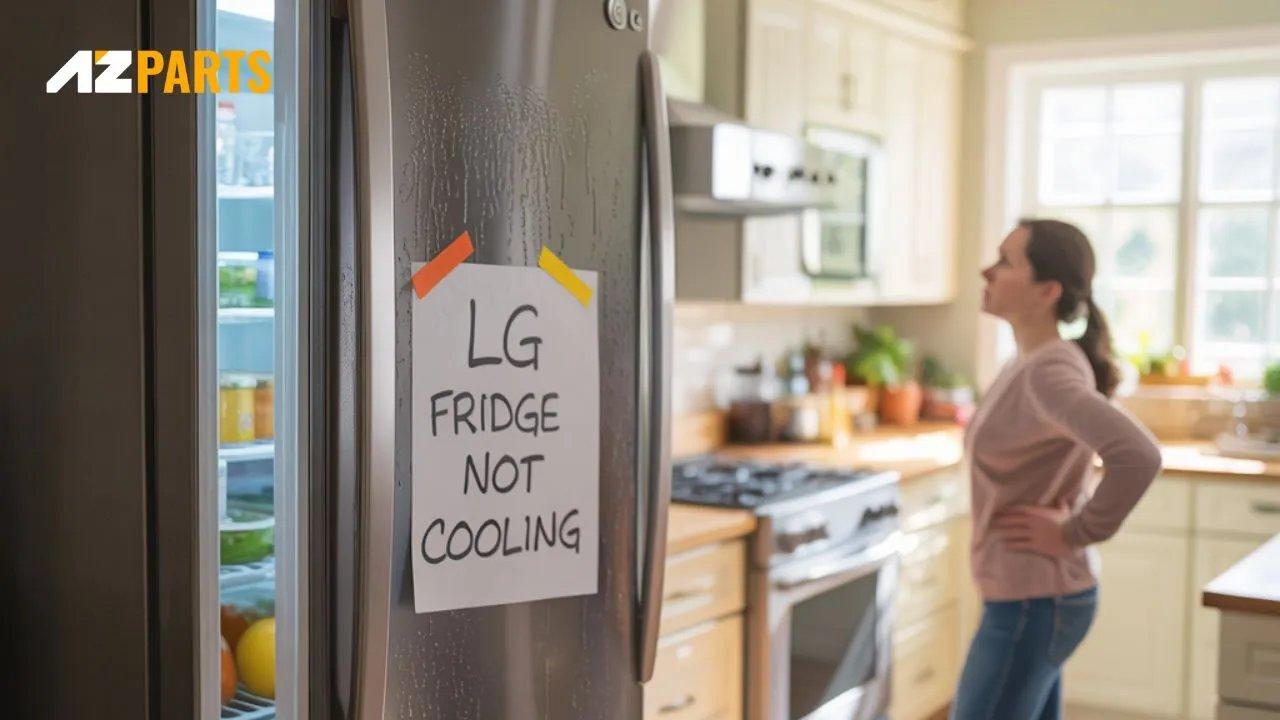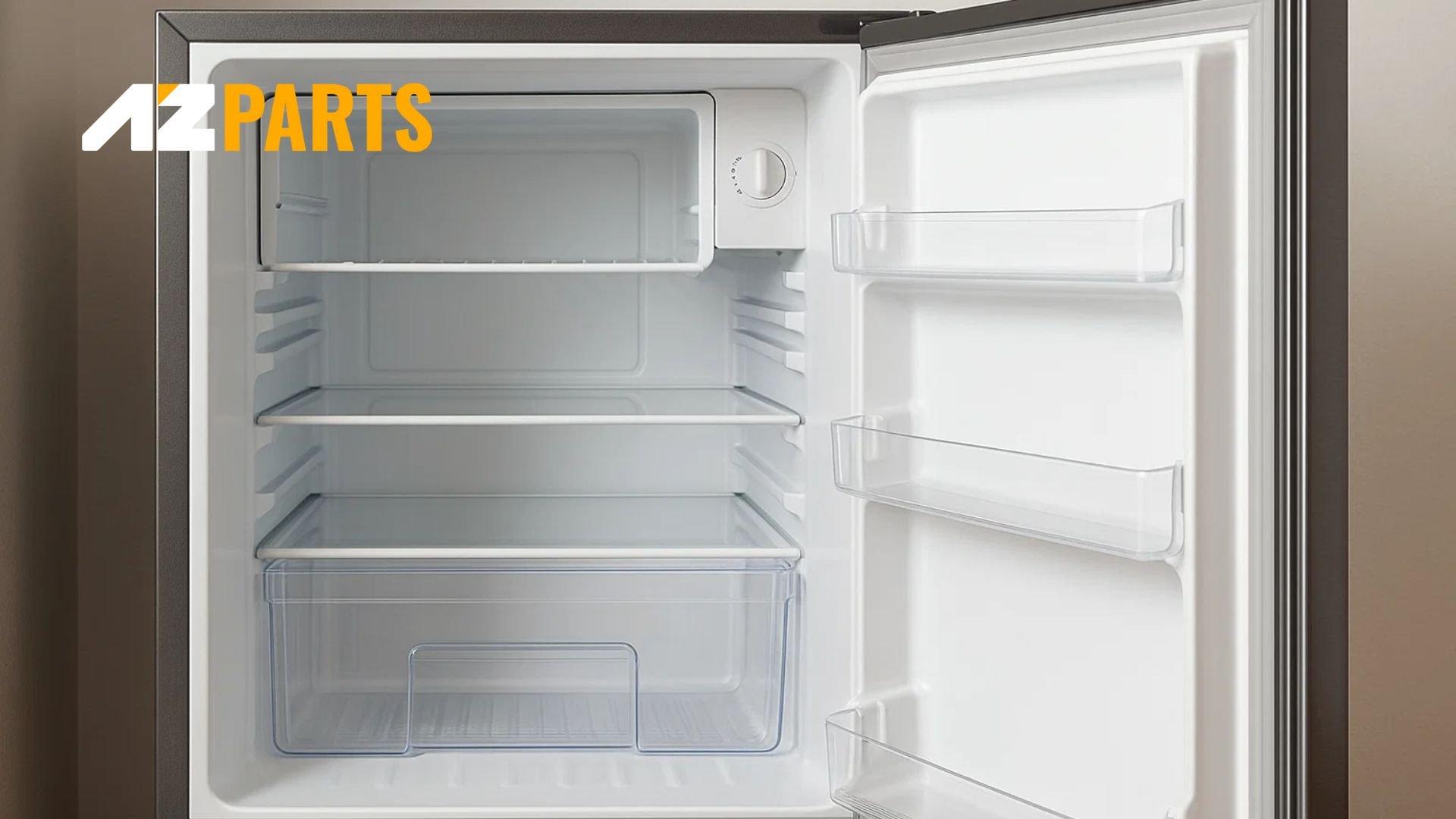Repair help
How to Troubleshoot a Fridge That’s Not Working but the Freezer Is
AZparts Team
Updated on July 14, 2025
8 min read
Is your fridge not working but the freezer working? This common issue can be both confusing and frustrating, especially when your food starts to spoil. Several factors could be behind the problem, from airflow blockages to faulty thermostats. In this guide, AZParts break down the possible causes and show you how to troubleshoot the issue effectively.
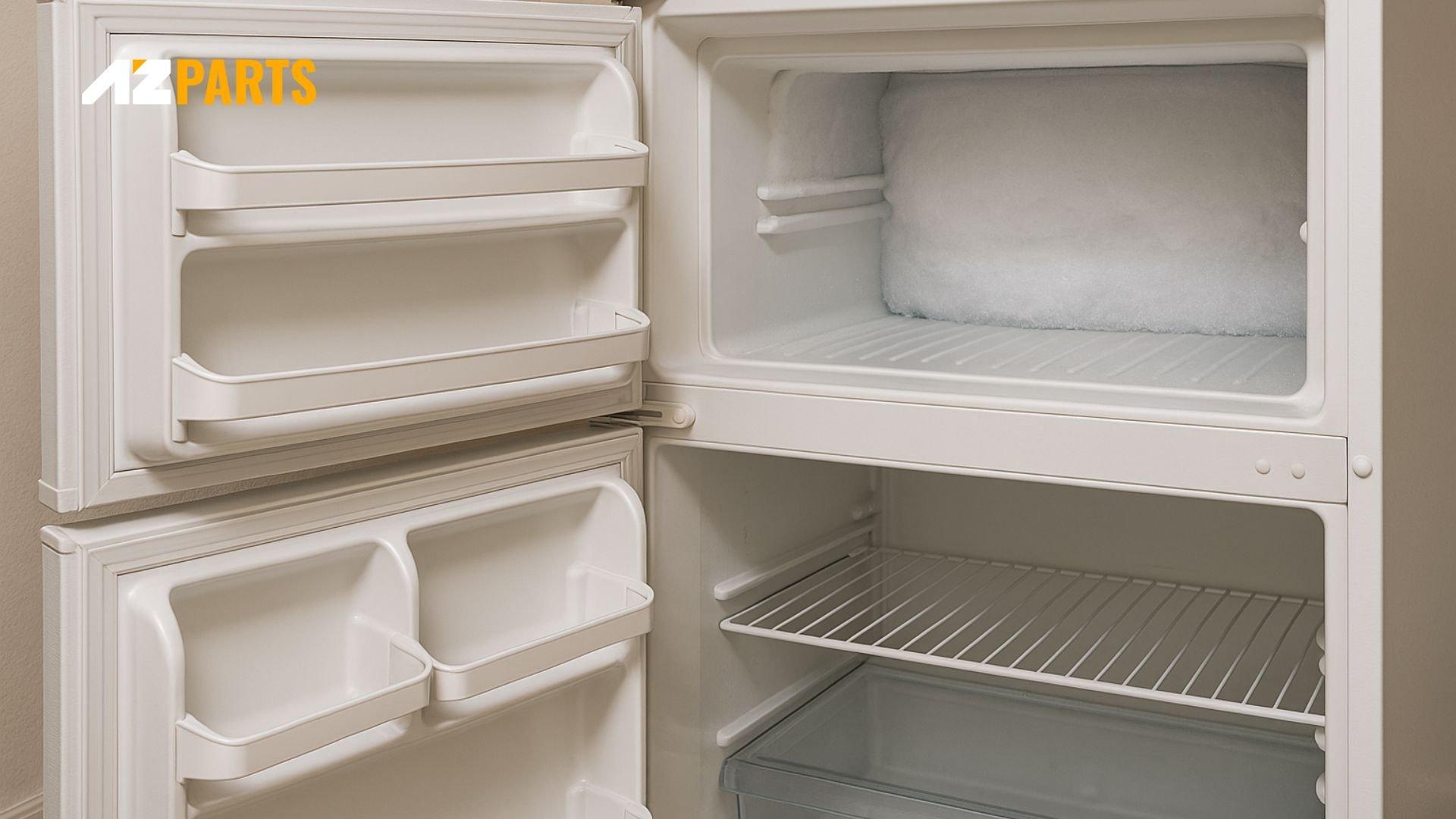
It’s a frustrating scenario: you open your fridge and find your food going warm or starting to spoil, yet the freezer is still running just fine. This is a common issue in many refrigerators and usually points to a cooling imbalance, where the cold air isn’t circulating properly between the compartments. Understanding the root cause is essential for a quick fix and avoiding unnecessary part replacements.
Below, we break down the most common reasons why your freezer stays cold but the fridge does not, starting with airflow issues.
1. Overstuff Blocked Airflow
When too much food is packed into the freezer or fridge, especially around the internal vents, the airflow becomes restricted. Even if the cooling system itself is functioning properly, limited air circulation means the fridge can't maintain a consistent temperature.
Signs of blocked airflow:
- Freezer is cold, but fridge is warm or room temperature
- Frost buildup near vents
- Loud or overactive fan sounds
How to fix:
- Avoid overpacking: Keep both compartments no more than ¾ full.
- Check for and clear any items covering air vents.
- Defrost any visible frost buildup manually if needed.
- Regularly clean the back and sides of your fridge to promote ventilation.
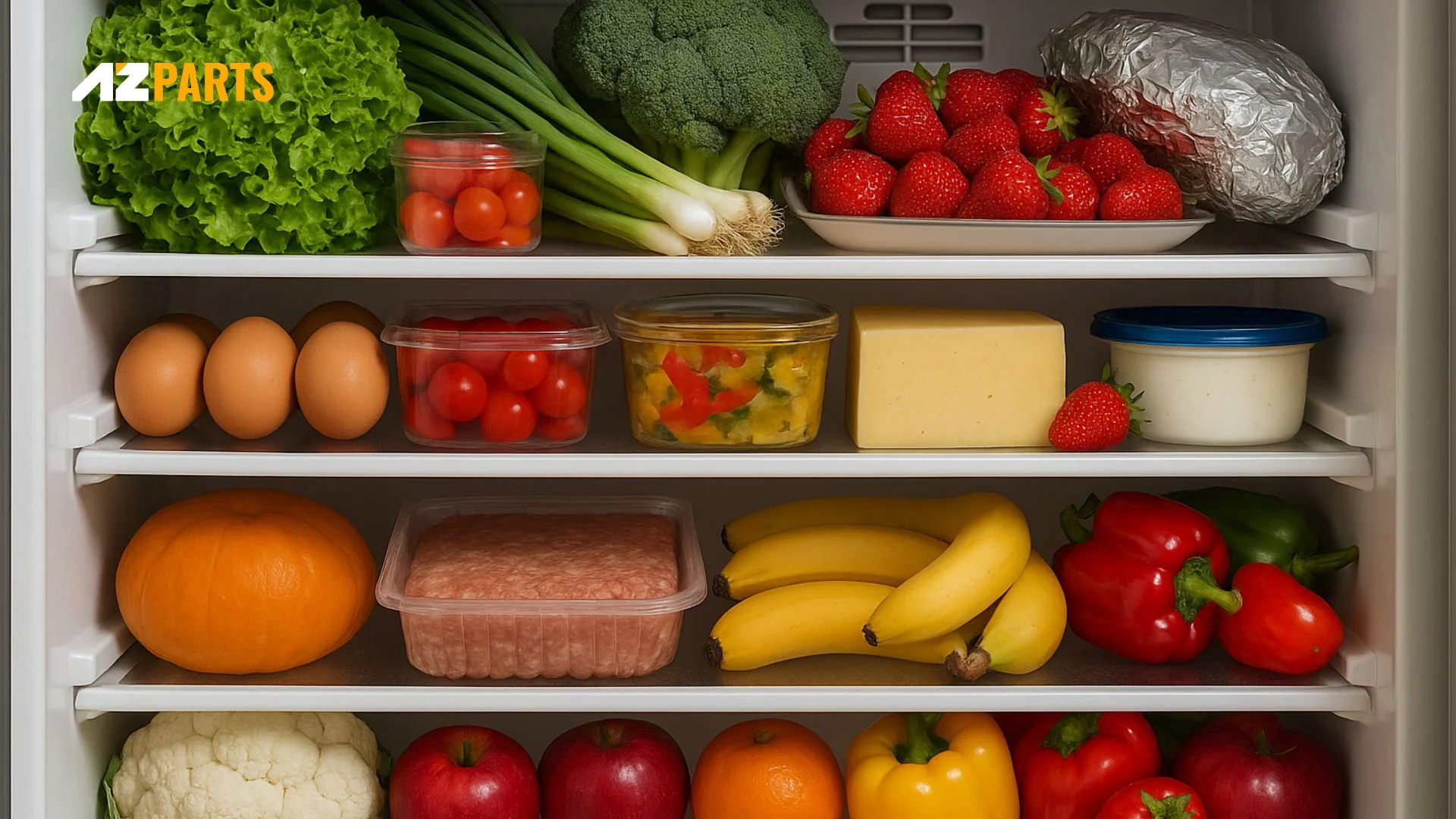
Overstuff blocked airflow make fridge not working (Source: AZParts)
2. Faulty Evaporator Fan Motor
The evaporator fan, usually located inside the freezer near the evaporator coils, draws air over the coils and pushes that cold air throughout the fridge and freezer. Without this circulation, the fridge can't receive the cold air it needs to stay cool.
Signs of Faulty Evaporator Fan Motor:
- Freezer is cold, but the fridge is warm or room temperature
- Unusual noises from the freezer (buzzing, clicking, or silence when it should be running)
- No air blowing into the fridge when the door switch is pressed
How to fix:
- Check for obstructions – Make sure nothing is blocking the fan blades.
- Test the fan – Open the freezer door and press the door switch manually. The fan should start spinning. If it doesn’t, that’s a sign of a problem.
- Verify power – If the fan isn’t working, ensure it's receiving power. Check the wiring, fuses, or circuit breakers.
- Replace if needed – If the fan is getting power but still doesn’t work, the motor likely needs to be replaced. You can find compatible refrigerator motors and other genuine replacement parts at AZParts.
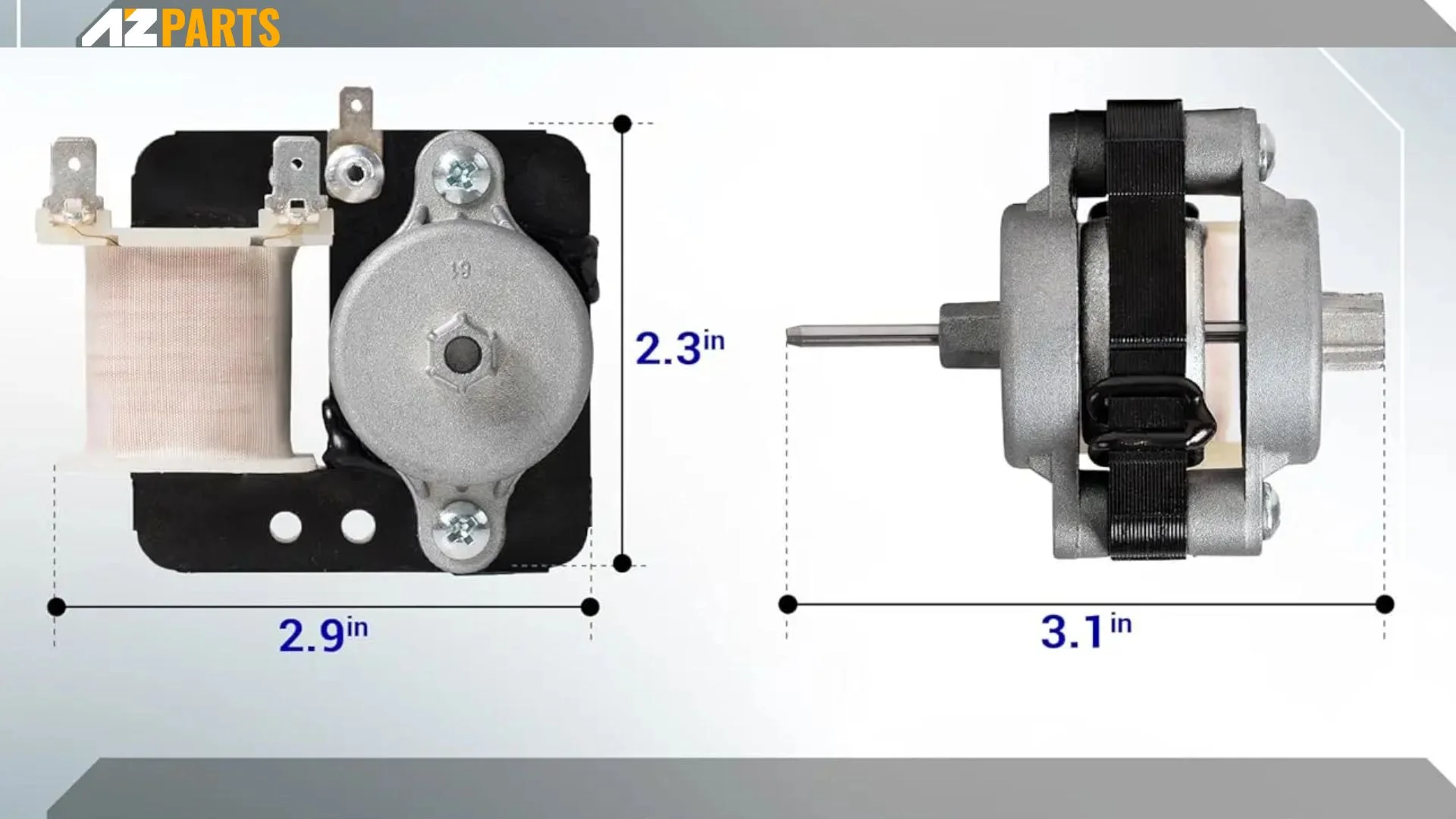
High-quality refrigerator motors at AZParts (Source: AZParts)
3. Damper Control Malfunction
The damper is a small door that regulates the flow of cold air from the freezer into the refrigerator compartment. When it’s working properly, the damper opens and closes based on the fridge’s temperature needs.
If the damper gets stuck in the closed position, or the motor controlling it fails, cold air from the freezer can’t reach the fridge. As a result, your freezer stays cold while the refrigerator becomes too warm to store food safely.
Signs of a damper control issue:
- Fridge is warm despite freezer functioning normally
- Little or no airflow coming into the fridge compartment
- Visible damper door not opening (in some models, behind a vent cover near the top or back of the fridge)
How to fix:
- Inspect the damper: Locate the damper and check whether it's open. You may be able to see it by removing a cover inside the fridge.
- Test movement: Manually try to open and close it. If it feels jammed or doesn’t move freely, it could be broken or blocked.
- Check the motor/control: In electronically controlled models, the motor or control board might be faulty. If it doesn’t respond to temperature changes, replacement is likely needed.
- Replace if necessary: If the damper or its motor is damaged, it should be replaced with a compatible part.
4. Dirty or Clogged Condenser Coils
Refrigerator condenser coils are responsible for releasing heat from inside the refrigerator to keep the system cool. When the coils are clogged or dirty, the compressor must work harder and may overheat, reducing its efficiency in cooling the refrigerator section. The freezer may still stay cold for a while, but the fridge struggles to maintain its temperature.
Signs of dirty or clogged condenser coils:
- Freezer is working fine, but fridge is warm
- Compressor runs constantly or is unusually hot
- Increased energy consumption
- You haven’t cleaned the coils in over 6–12 months
How to clean condenser coils:
- Unplug the refrigerator – Always disconnect power before doing any maintenance.
- Locate the coils – Typically found at the back or underneath the unit. Refer to your fridge's manual if unsure.
- Vacuum the coils – Use a vacuum with a brush attachment to remove loose debris.
- Wipe with coil cleaner – Spray a refrigerator-safe coil cleaning solution and gently wipe the coils.
- Rinse and dry – If needed, lightly rinse with water and dry thoroughly with a clean cloth.
- Plug the fridge back in – Allow it to stabilize and monitor temperature changes over the next few hours.
Tip: Cleaning the coils may take 15–30 minutes, but can dramatically improve cooling performance. If your refrigerator still doesn’t cool properly after cleaning, there may be an issue with the compressor or another internal component.
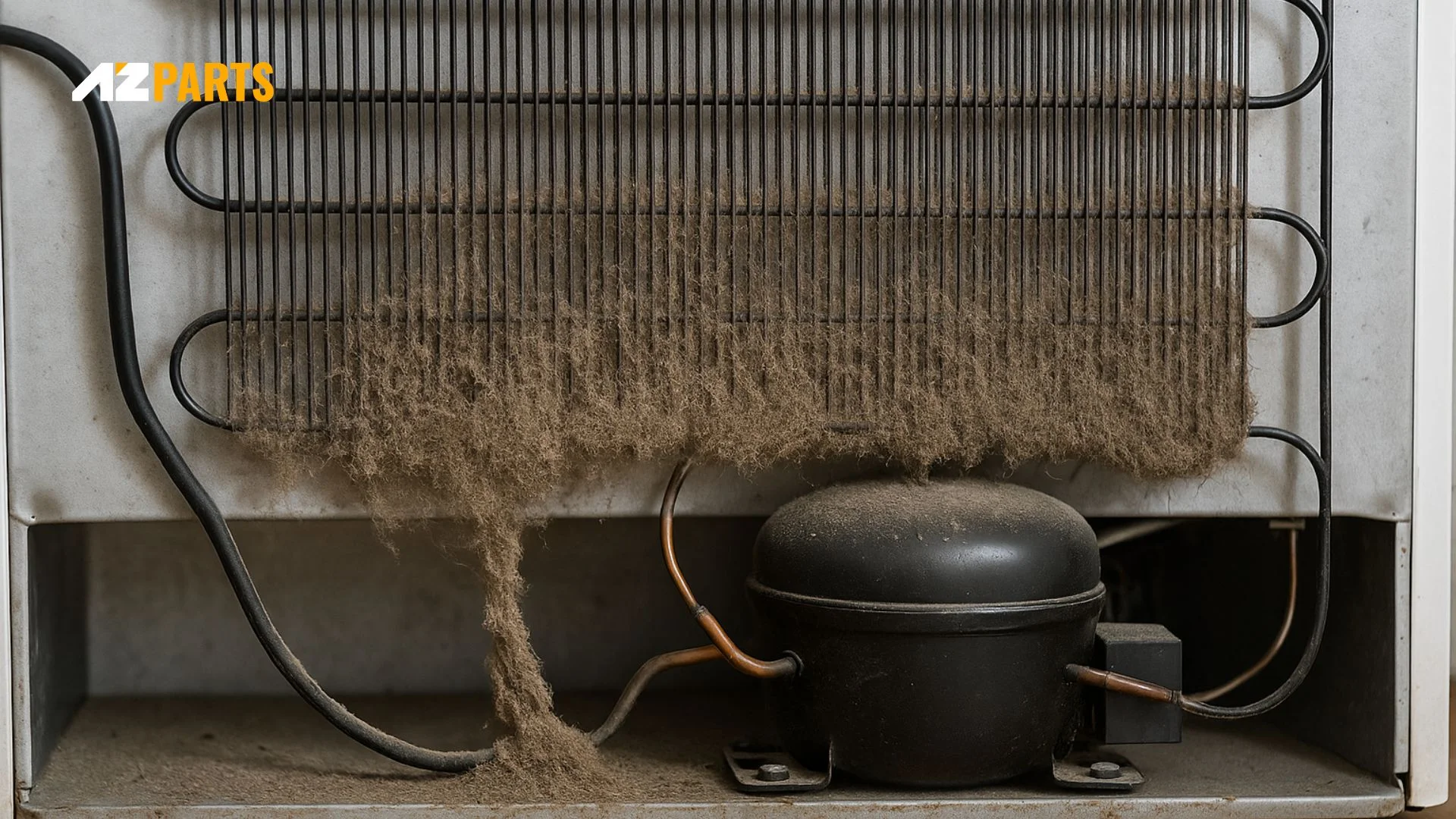
Dirty or clogged condenser coils in refrigerator make overheating (Source: AZParts)
5. Defrost System Issues
The defrost system plays a crucial role in preventing frost buildup on the evaporator coils, which are responsible for cooling the air inside your fridge. When this system stops working properly, ice accumulates on the coils, eventually blocking airflow to the refrigerator compartment even though the freezer stays cold. The most common causes defrost system failure include:
- A burned-out defrost heater, which can no longer melt frost from the coils
- A faulty defrost thermostat that doesn’t trigger the defrost cycle
- A malfunctioning defrost timer, which fails to initiate the defrost process at regular intervals
Signs of a defrost issue:
- Freezer cold, fridge warm
- Frost or ice buildup on the back panel of the freezer
- Reduced or no airflow into the fridge compartment
- Fridge temperature rises slowly over time
How to troubleshoot:
- Inspect the defrost timer – This component controls when the defrost cycle starts. If it's not functioning, the refrigerator timer will need to be replaced.
- Check for ice buildup – Remove the back panel inside the freezer and look for frost-covered coils.
- Test the defrost heater and refrigerator thermostat – These parts require a multimeter to verify continuity and function.
- Manual defrost (temporary fix) – Unplug the fridge and let it defrost for 12–24 hours. If it works temporarily afterward, your defrost system likely needs service.
_1751366955.webp)
AZParts with durable refrigerator thermostat (Source: AZParts)
6. Thermistor or Temperature Sensor Failure
Thermistor continuously monitors the air temperature inside the refrigerator and sends the data to the control board. If the thermistor malfunctions, it can send incorrect readings, leading the system to think the fridge is cold enough even when it’s not.
If the thermistor gives false readings or stops working altogether, the control board may not trigger the compressor or fans to circulate cold air into the fridge. The freezer continues to operate normally because it often has a separate sensor or independent cooling cycle.
Signs of thermistor failure:
- Freezer is cold but refrigerator is warm
- Inconsistent fridge temperature or slow cooling
- Control board doesn’t respond to actual fridge temperature
- No obvious airflow issue, but fridge still underperforms
How to troubleshoot:
- Unplug the refrigerator – Safety first before handling internal components.
- Locate the thermistor – Usually behind the rear panel inside the fridge or freezer compartment.
- Test with a multimeter – Measure resistance across the thermistor. Resistance should vary with temperature. If not, the sensor is defective.
- Replace if faulty – A non-responsive or inaccurately reading thermistor must be replaced for proper cooling control.
7. Temperature Control Board Failure
The temperature control board functions as the brain of your refrigerator. It receives input from sensors (like the thermistor), controls the compressor, regulates fan operation, and manages the defrost cycle. When this component fails, your fridge may stop cooling properly even though the freezer continues to run normally.
Signs of control board failure:
- Fridge not cooling despite no visible airflow or sensor issues
- Compressor not running when it should
- Evaporator fan not responding even after sensor checks
- Inconsistent or erratic temperature readings
How to fix:
- Visual inspection – Look for signs of burning, corrosion, or loose connections on the refrigerator control board.
- Testing is advanced – Diagnosing a failed board often requires checking voltage outputs and signal timing, which may not be feasible without specialized tools.
- Rule out other causes first – Confirm that the thermistor, fans, and defrost system are all functioning before suspecting the board.
_1751366982.webp)
Control board is the brain of refrigerator (Source: AZParts)
A refrigerator that isn’t cooling while the freezer still works can be frustrating, but as you’ve seen, the issue often comes down to airflow blockages, faulty components, or simple maintenance oversights. By carefully inspecting each component, from the refrigerator defrost heater to the control board, you may be able to resolve the issue without calling in a technician. If repairs are needed, be sure to use high-quality refrigerator parts from reliable suppliers like AZParts to ensure long-term performance. With the right approach and support, you can have your refrigerator running smoothly again in no time.
Contact Information:
8 The Green, Ste A, Dover, Delaware 19901-3618, United States
Refrigerator
Further Reading
Further Reading

